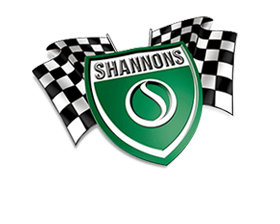2022 Shannons Summer Timed Online Auction
Lot
82
1975 Honda CB750 F1 Motorcycle
Result: PASSED IN
Location: Brisbane
Passed In
Specifications
| Engine | 0.75-litre 4-cylinder |
|---|---|
| Gearbox | 5-speed manual |
| Body Work | Motorcycle |
| Colour | Red/Gold Highlights |
| Trim | Black |
| Wheels | Chrome wire |
| Brakes | Discs |
Description
This lot is no
longer
available
The original Honda CB750 is one of the most influential motorcycles to appear in the first generation after World War Two. This machine, which retained the kick-starter as a back-up but was started with a key, initiated the trend to air-cooled single overhead camshaft (SOHC) 4-cylinder engines: it marked the start of a new modern era. The CB750 was unique among production motorcycles of the day not only in having an SOHC engine but in being equipped with a disc brake on the front wheel. Even the 5-speed gearbox seemed incredibly advanced for a 1969 bike. And with its trademark quad chromed exhaust pipes it certainly looked like one of Honda’s racing motorcycles adapted for the road. By November 1968 when the CB750 made its public debut at the fifteenth Tokyo Show, many of the nicest people were already meeting each other on their small-capacity Honda motorcycles, but anyone wanting a big-capacity machine had to buy a British Triumph, Norton or BSA. The previous year, Honda America’s service manager Bob Hansen flew to Japan and discussed with Soichiro Honda the possibility of using Grand Prix technology in bikes prepared for American motorcycle events. (American racing's governing body, the AMA, had decreed that only production motorcycles would be eligible and that the maximum capacity for OHV machines would be 500cc, while up to 750cc would be permitted for side-valve bikes to include Harley Davidsons). The notion of race at the weekend and sell on the Monday was as applicable in the US market as in Australia (especially for the Bathurst 500) and Hansen’s believed Honda could increase its market share markedly by creating a big-capacity road bike, ‘the bigger the better’. He envisaged a ‘King of Motorcycles’. And this is essentially what Soichiro Honda delivered. According to Yoshiro Harada, the project manager, the engine capacity was decided – ‘the bigger the better’ being somewhat confusing! – when he heard that Triumph was developing a 750cc 3-cylinder engine. The UK market was also pivotal to Honda’s future, which explains why it was there at the Metropole Hotel in April 1969 that the 750 was officially launched. The arrival of this King of Motorcycles effectively announced the Japanese challenge to the British industry. ‘A retail price of $1495 was announced by American Honda’s President Kihachiro Kawashima,’ Harada remembered. ‘Since large bikes were selling for between $2800 and $4000 in the US at that time, all 2000 dealers burst into thunderous applause when they heard its price.’ In 1970 the AMA amended its rules to include motorcycles with 750cc in any configuration. In 1975 Honda upgraded the CB750 under the ‘F1’ moniker. This second version had a more café racer style and the quad exhausts were swapped for a single. A disc brake replaced the rear drum.

















